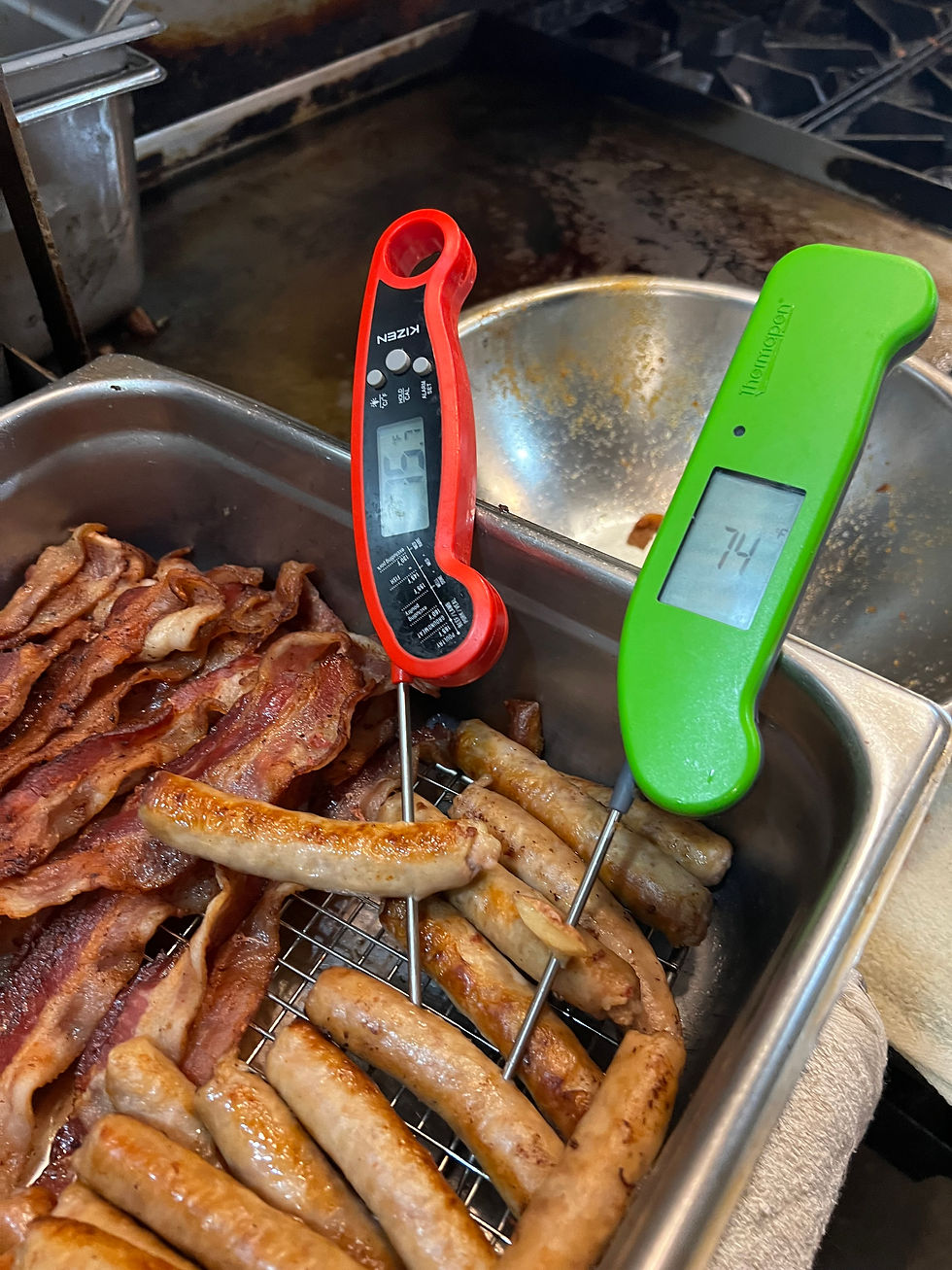What's wrong with this picture?
- mcfoodsafety
- Jan 31, 2022
- 2 min read
Updated: Mar 11, 2022
These are actual photographs from different inspections in our county. Can you see what the problems are?
Febuary 2, 2022
1. ↓ Cooling log. Does it tell us what we want to know?

2. ↓ Lots to look at here. Most of the bowls are filled with various raw ground meats.

3. ↓ In use rice scoop ...

4. ↓ Walk-in storage of meats.

5. ↓ Salt block.

Answers:
Photo # 1

This cooling log doesn't tell us that the soup was correctly cooled, does it?
We want to see that the clam chowder was cooled from 135F to 70F in 2 hours or less.
If you look at the first entry, the cooling started at 10:00 was 152F, and after two hours, it was 118F.
The second entry at 11:30 was checked in two hours and was 78F.
So what should have been done?
Instead of continuing the cooling, the clam chowder should have been reheated to 165F for 15 seconds or more, and the cooling processes started again. The documentation begins when the chowder drops to 135F.
Photo #2

The stainless steel bowls have ground raw meats. The bottom shelf has ground chicken sitting on top of pork back fat and over a pot of cooked pork.
This photo shows the corrective action. All the ground raw proteins are now in the correct locations to prevent cross-contamination. The whole eggs are on the bottom shelf, on the left, under the raw vegetables.

Photo #3
The rice paddle in the first photograph had been partially submerged in ice water throughout lunch service. This practice allows bacteria to potentially grow on the exposed cooked rice when not at 41F or less.
It was corrected by switching out the melting ice and replacing the rice paddle with a clean one. Once the rice scoop is used again, it will be returned and completely submerged in the ice water.
Photo #4
Easy peasy... ground meat over muscle meat. Based on the cooking temperatures that kill the potential toxins, ground beef (155 for 15 seconds on more) must be below the intact muscle meat (145F for 15 seconds or more) to prevent potential cross-contamination.
Photo #5
This salt block has seen some heat! As we know from previous posts, a salt block is not considered an approved food contact surface more than once, as it cannot be properly washed, rinsed, and sanitized. Salt blocks are one-time use only and cannot be repurposed.



최고의 메이져 <a href="https://dobagsa.com">먹튀검증</a> 이곳에서 즐기세요
더이상 먹튀 당하지 말고 <a href="https://dobagsa.com">먹튀검증</a> 이곳에서 즐기세요